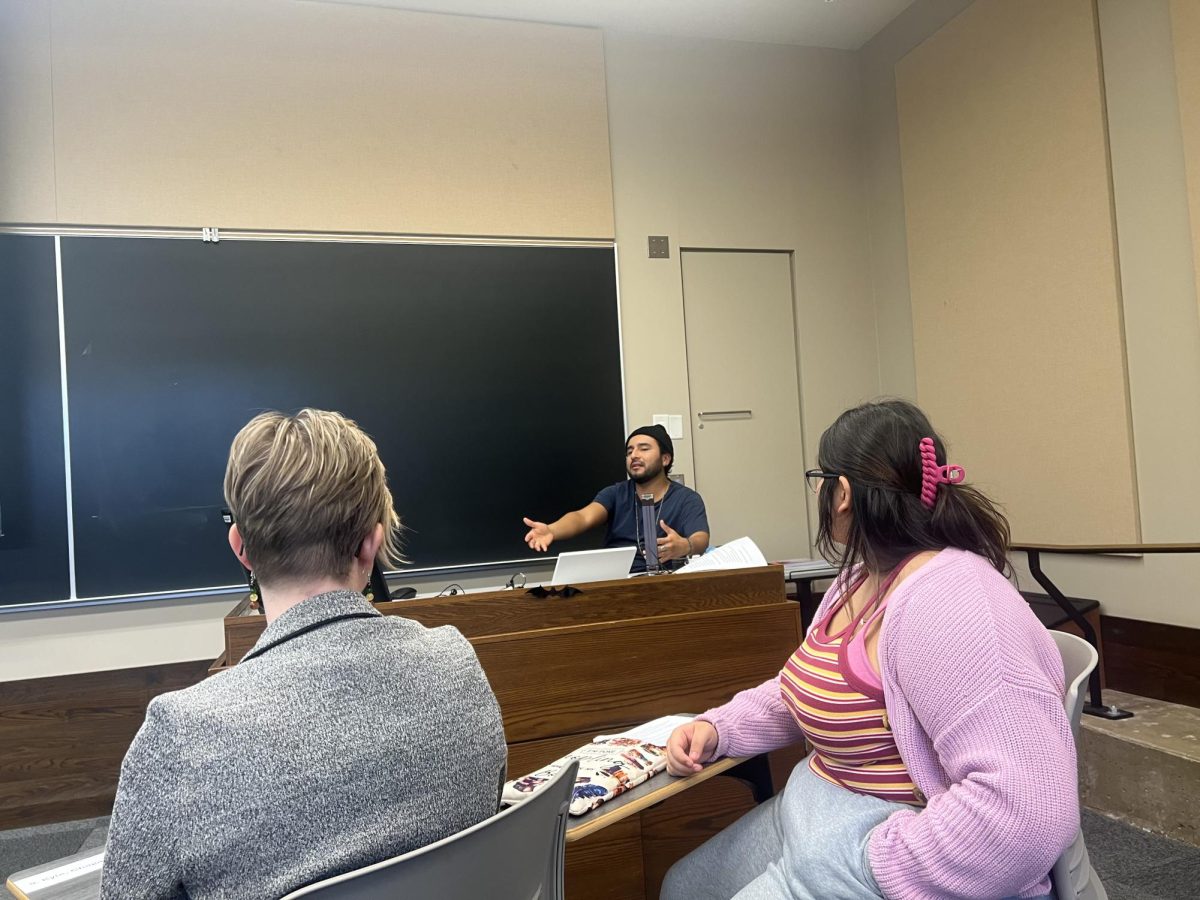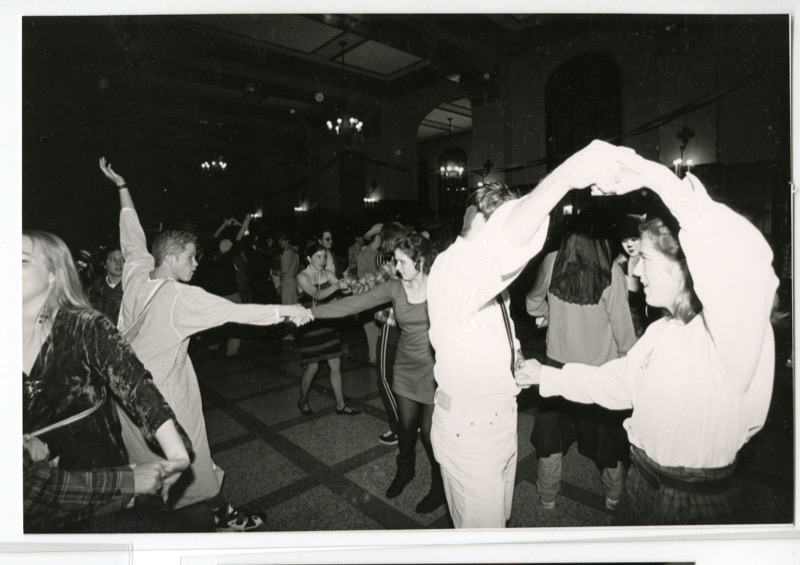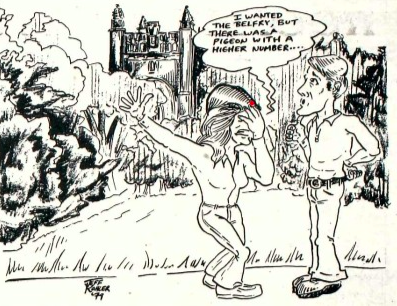Picture it— it’s Ninth Friday and you’re sitting in Sayles after an afternoon of classes. You sit down with your student publication of choice and look across Lower Sayles to see friends, acquaintances and strangers, united in their optimism for the weekend and denial of impending finals.
“bzz bzz”
A deafening symphony of vibrations. You and every other freshman, sophomore and junior share a blissfully ignorant glance at the latest email, “Housing Lottery Information.” It’s time. You open it, expecting the delusional fantasy we all collectively buy into, that you’re gonna be the exception, the lucky 100 who are free to claim the power and authority their draw number provides. Instead, your stomach sinks, so does nearly all of campus’. And then people start texting.
What follows is a crazed frenzy that involves copious networking, planning, emailing and typing tooth and nail for the security of decent housing. And yet, this process is just as constant as it is chaotic, a system of housing assignment that we have maintained and relied on for generations of Carls…right?
Carleton has always been a residential college, part of the college’s effort to “provide a safe and supportive residential environment which complements and extends the educational experience of students,” according to the Residential Life website. Residential colleges like Carleton wish to house students for all four years to create a close-knit community, which allows students to focus more intensely on their studies and cultivates a healthy campus atmosphere. Yet Carls, for decades of the college’s residential history, have felt that the anxiety and stress surrounding room draw are anything but healthy.
In 1993, Fillard Rhyne wrote in the Carletonian, “while getting a good room is important, there is much more ‘scamming’ and the like than there needs to be.
Don’t desert your friends, and be considerate of others during draw. You might actually have more fun that way.” The process has always shifted around in order to be more ‘fair’ or ‘efficient,’ often with varied but never consistent levels of success,—ultimately, the process has always been a time of panic.
The act of drawing rooms used to be a public display: students would gather in the Great Hall and, on stage, draw their room for the upcoming academic year.
This in itself created quite a substantially different atmosphere, which was far more communal, less private and much more boisterous. It was such a festive event that in 1987, the Office of Residential Life had to explicitly forbid bringing alcohol into the Great Hall due to multiple accidents. Evidently, this was a process quite different from the digital time crunch of the modern-day Currently, students have a five minute window in which they are allowed to select rooms.
Draw numbers used to be based not only on the number of one person, who would then draw in a group of people. Instead, your group’s numbers would be added up in an aggregate sum, with priority going to whoever had the lowest combined number. For example, if you were in a group of four, you could add all four of your numbers up, regardless of class year, and that is the number you would use for priority. This approach was abandoned in the 80s as it became unmanageable due to the networking among students; however, it is a problem that many Carls still struggle with today. “This process sucks; there’s so much coordination and strategy involved. When it comes to housing, your draw number is everything; it honestly ruins friendships sometimes,” said Emma Freedman ’23.
So despite occasional administrative attempts to make the process easier, why do we maintain such a hectic Room Draw system? “I can only imagine it’s because no one has cared enough to change it. I kind of just accepted room draw as the rule, and I imagine the administration does too. I doubt it’s the easiest way to do things, though,” said Sophia Quast ’23.
But is it Fair?
Besides not being the easiest process, some students believe the current room draw process fails to ensure fair housing for students. Lindsay Boettiger ’23 says, “I really think that the administration could put their heads together to make it a little bit more fair. We all pay the same for housing while some people in the same class year will live in Musser and some will live in Townhouses.”
Most students cite this as the main complaint against the room draw process—the varying levels of quality with which you are confronted, as well as the constricted options available depending on your draw number.
Though, according to some, this is what makes the process fair.
“If you made it more expensive to live in better housing, then the only people who could afford to live there would be wealthier students,” said KatieRose Kimball ’23, “To me, that seems way less fair.” This probes at an obvious question—if room draw isn’t working, then what are the alternatives? How do we know that an alternative process would be more fair? The truth is, we don’t. Other colleges, such as Vanderbilt University, a primarily residential college with only 900 students living off campus out of its nearly 13,000 enrollment, take choice out of the equation assigning students based on their preferences and year. This means that the students ultimately do not have control over their housing placement but are also not responsible for competing with one another based on lottery numbers.
Students take issue with the lack of consistency regarding the year-to-year draw process, and COVID-19 has only exacerbated these issues. This past year, there was an increased number of seniors in the Class of 2021 who, having taken an earlier term off during the pandemic, chose to remain at Carleton during the fall of 2021. This resulted in many irregularities that changed the housing landscape. Many “super seniors” found themselves with high draw numbers through seniority and, as a result, left many current seniors in atypical housing circumstances.
This problem mainly affected Northfield Option, for which less students in the Class of 2022 were approved, and which is an arduous process in of itself. “It’d be nice if the process were smoother, but it hasn’t been over the years,” said Clark Ohnesorge, a landlord in Northfield who leases properties to Carleton seniors. For rising seniors hoping to participate in Northfield Option, the chaos of coordination is significantly greater. Students are expected to coordinate with landlords before draw numbers even come out, with landlord contact information having been passed around closed social circles. In order to have a good chance at living in off-campus housing, you must understand the process before it has been formally explained.
Often, landlords will lease to the first people whom they get in contact with after draw numbers are released that have a draw number below 100, regardless of whether they have been approved for Northfield Option yet. In the Class of 2023, however, a student with a number as high as 253 was approved for off-campus housing, reflecting a system that continues to change erratically due to COVID-19.
The process is even less clear for landlords, who often are pressured to sign with potential tenants before they have been approved for Northfield Option. “It used to be that we wouldn’t let anyone with a number over 60 sign, now you’ve got a good shot of getting Northfield Option as long as you have anything under 100,” continued Ohnesorge. This is in part due to an increased interest in living on-campus, largely due to the renovation and development of nicer residence halls over the past decade.
But ultimately, these inconsistencies with the housing process reflect a system that is far less egalitarian than the randomness suggests. Freedman believes that the solution is to move away from a random process: “There should be some mediatory process to make it a little less random; I mean in class registration, there’s a process in place to make sure that everyone is able to get a good priority at least once per year; there should be something similar for housing.”
So what next?
Moving away from a randomized number system might benefit the accessibility and fairness of the housing assignment system. Taking choice out of the equation might result in a less stressful process for Carls, who feel that the system is often overwhelming and puts unnecessary pressure on students to navigate and understand an ever-changing process. However, as we sit on the cusp of a new housing plan, which will establish new independent living environments next to the Recreation Center and on Union Street, there will inevitably be seismic changes to the way students engage with room draw
Carleton’s room draw system has been constant but never consistent. There have always been policy and cultural factors that influence the fairness of this process, sometimes at the expense of students’ mental health and social relationships. Carleton students must confront these changes head-on and decide if our room draw system is the most efficient, fair or accessible way to assign housing. Do the anxiety and stress of housing that span generations of Carleton history demand a more tranquil approach, or are they built into the very foundation of our residence halls?













